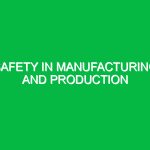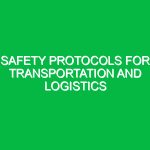In the realm of Health, Safety, and Environment (HSE), the concepts of risk assessment and safety planning are not merely regulatory requirements; they are fundamental practices that protect lives and ensure the sustainability of operations across various industries. Risk assessment and safety planning involve identifying potential hazards, evaluating risks, and implementing measures to mitigate those risks, creating a safer work environment for everyone involved. This article delves into the intricacies of these concepts, their significance, and their practical applications.
Understanding Risk Assessment
At its core, risk assessment is a systematic process that helps organizations identify potential hazards that could cause harm. These hazards could range from physical dangers, such as machinery malfunctions, to chemical exposures, ergonomic issues, or psychosocial stressors. Risk assessment typically involves several steps: identifying hazards, analyzing risks, evaluating risks, and determining appropriate control measures.
To illustrate, consider a manufacturing facility where heavy machinery operates. A thorough risk assessment might reveal several potential hazards: the risk of equipment failure, exposure to hazardous materials, and the possibility of slips, trips, and falls. Each of these hazards requires careful consideration, as each presents unique risks to employees and the operational integrity of the facility.
The Importance of Safety Planning
Once risks are identified, safety planning comes into play. Safety planning involves the development of strategies and policies to manage identified risks effectively. This includes outlining procedures for safe operation, emergency response plans, employee training programs, and communication strategies. It is a proactive approach aimed at minimizing the likelihood of incidents and ensuring that, in the event of an emergency, everyone knows how to respond.
For example, in the case of a chemical spill in a laboratory, a well-structured safety plan would include immediate evacuation procedures, designated roles for staff during the incident, and protocols for notifying emergency services. This not only helps mitigate the potential impact of the spill but also ensures that employees feel equipped to handle unexpected situations.
Identifying Hazards and Risks
When conducting a risk assessment, it’s essential to adopt a comprehensive approach to identify all possible hazards. Hazards can be categorized into several types:
Physical Hazards
Physical hazards encompass environmental factors that can cause harm. These include machinery, noise, temperature extremes, and working at heights. For instance, in construction sites, workers are at risk of falls, being struck by objects, or electrocution. Each of these risks must be evaluated to determine the likelihood of occurrence and the severity of potential injuries.
Chemical Hazards
Chemical hazards arise from exposure to harmful substances. These can include gases, vapors, liquids, or dust. In laboratories, for example, improper handling of chemicals can lead to burns, respiratory issues, or even long-term health effects. Therefore, identifying chemicals in use and assessing their risks is crucial for safety planning.
Biological Hazards
Biological hazards refer to risks posed by exposure to harmful microorganisms, including bacteria, viruses, and fungi. Healthcare facilities are particularly susceptible to these hazards. Employees must be educated on proper hygiene practices and the use of personal protective equipment (PPE) to minimize exposure.
Ergonomic Hazards
Ergonomic hazards result from poor workplace design or practices that lead to musculoskeletal injuries. For example, repetitive motion or awkward postures can cause chronic pain among workers. Conducting ergonomic assessments and implementing workstation adjustments are vital components of safety planning to prevent these injuries.
Psychosocial Hazards
Psycho-social hazards involve workplace stressors that can affect mental health, such as high-pressure environments, bullying, or lack of support. Recognizing these hazards is essential to promote a healthy work culture and prevent burnout. Implementing mental health resources and support systems can aid in mitigating these risks.
Best Practices for Safety Precautions
Once hazards are identified, implementing effective safety precautions is vital. Here are some best practices related to risk assessment and safety planning:
Conduct Regular Training
Training employees on safety procedures is crucial. Regular training sessions ensure everyone is familiar with the risks associated with their jobs and the necessary precautions to take. This includes training on the proper use of PPE, emergency response drills, and hazard recognition.
Implement Control Measures
Control measures are strategies designed to eliminate or reduce risks. These can be categorized into the following:
-
Elimination: Remove the hazard entirely, if possible. For example, replacing a hazardous chemical with a safer alternative.
-
Substitution: Replace the hazard with something less dangerous. For instance, using less harmful machinery.
-
Engineering Controls: Implement physical changes to the workplace, such as installing guards on machines or improving ventilation in areas with chemical exposure.
-
Administrative Controls: Change how tasks are performed through policies, procedures, and scheduling to minimize exposure to hazards. This could involve rotating job assignments to reduce repetitive strain.
-
Personal Protective Equipment (PPE): When hazards cannot be eliminated, providing appropriate PPE is essential. This includes gloves, helmets, masks, and safety glasses.
Establish Clear Communication Channels
Effective communication is key in any safety plan. Establishing clear lines of communication ensures that all employees are aware of potential hazards and know the procedures to follow in emergencies. Regular safety meetings and updates can foster a culture of safety within the organization.
Conduct Regular Inspections and Audits
Regular safety audits and inspections can help identify potential risks that may have been overlooked. These assessments should not be a one-time event; rather, they should be conducted periodically to ensure ongoing compliance and safety. Engaging employees in these audits can provide valuable insights into potential hazards.
Regulations and Standards in Risk Assessment and Safety Planning
Several regulations and standards govern risk assessment and safety planning across various industries. Understanding these regulations is essential for compliance and fostering a safe working environment. Here are a few key regulations:
Occupational Safety and Health Administration (OSHA)
In the United States, OSHA establishes and enforces standards to ensure worker safety and health. OSHA‘s General Duty Clause requires employers to provide a workplace free from recognized hazards. Compliance with OSHA regulations is critical for any organization operating in high-risk industries.
International Organization for Standardization (ISO) Standards
ISO standards, such as ISO 45001, provide frameworks for occupational health and safety management systems. These standards help organizations implement effective risk assessment and safety planning processes, promoting continuous improvement in safety performance.
European Union Regulations
In Europe, various directives and regulations govern workplace safety, including the Framework Directive 89/391/EEC. This directive outlines employer responsibilities to ensure employee safety and health, emphasizing the need for risk assessment and preventive measures.
Conclusion
Risk assessment and safety planning are indispensable components of the HSE domain. By systematically identifying hazards and implementing effective safety measures, organizations can create a safer work environment that protects employees and enhances operational efficiency. The journey toward a culture of safety is a continuous process, requiring commitment, training, and adherence to regulatory standards. As industries evolve, so too must our approaches to risk assessment and safety planning, ensuring that we prioritize the health and safety of every individual in the workplace.


